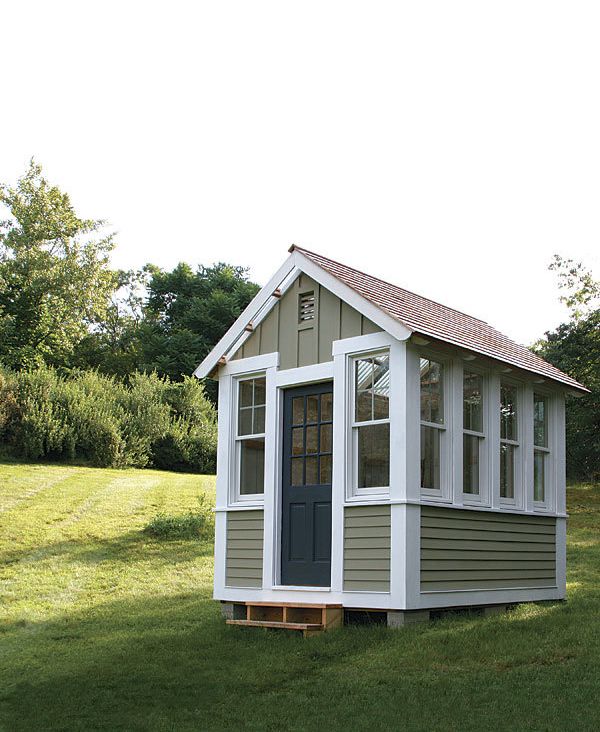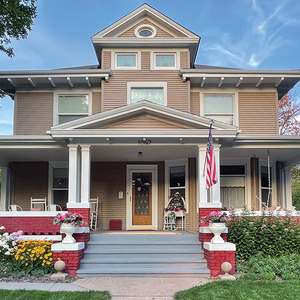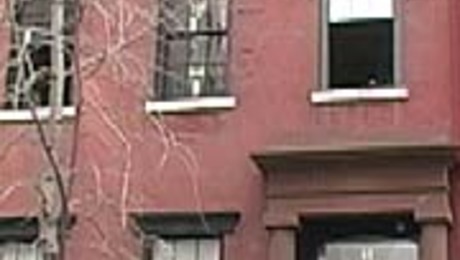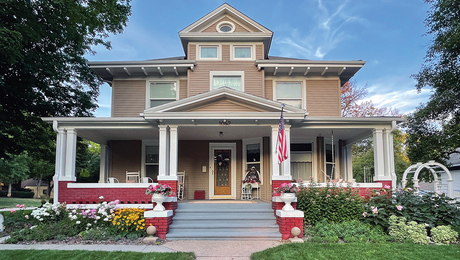Build An Heirloom Garden Shed
Anything but typical, this handsome outbuilding can be built by one person in about a week

Synopsis: A backyard shed is a handy repository for all manner of tools and implements for gardening and lawn care. While most of these structures are utilitarian buildings, they don’t have to be. In this article, FHB Project House editor Justin Fink shows how to build an attractive, stylish garden shed that would be a showpiece for any backyard.
The shed starts with a basic floor that rests on concrete blocks upon pads of compacted gravel. (If your site isn’t adequately level, you will need to do preliminary site work or consider poured-concrete piers.) After the floor framing is complete and secured, the walls go up. The wall assembly consists of 4×4 top and bottom plates, 4×6 corner posts, and 4×4 wall posts. Next comes the roof; while the roof is more of a challenge than the floor and walls, a handy layout jig (instructions included) makes the work easier. With the basic framing complete, the roof trim goes on, followed by the roofing. Half of the roof is covered with cedar shingles, while the other half is covered with clear polycarbonate panels to maximize incoming sunlight. After the roof is complete, install the door, the windows, and the sill. To complete the shed, install the trim and siding.
Sheds are popular doit-yourself projects. They’re quick to build, and they offer a taste of everything from framing to finish. Not surprisingly, there’s no shortage of information on building sheds, and a lot of it uses a predictable list of materials: 2x4s, panel siding, tiny windows, and asphalt shingles. When our colleagues at Fine Gardening asked us to design and build a shed for them, however, we decided to make something a bit different. We wanted to give our project the kind of classic feel you get from a timber-frame outbuilding, but without the expensive materials and required skill. We ended up designing the structure with pressure-treated 4×4 lumber as sort of a hybrid timber frame. Wanting to let that style influence the rest of the project as well, we chose a solidplank floor rather than one made of plywood or osB, and wood clapboards and boardand- batten siding rather than t-111 panel siding. Instead of
asphalt shingles, we chose cedar shingles for one side of the roof and polycarbonate panels to let light in on the other side.
Our shed took longer to make than a standard outbuilding, but the payoff was worth the effort.
BONUS FEATURES:
- Videos: Watch the free companion video series
- 3-D Model: Download the free SketchUp digital model (Free SketchUp software is required for viewing)
- Rafter Jig: Print and use this jig to cut the rafter tails



























View Comments
Is all lumber in this build pressure treated? or just the base?
Thanks.
The link to the sketchup model is broken
did you prepare a parts list and cut list for this project? That would be extremely helpful!
rjwood view the pdf
Thank you so much for making this available! I lost an old 12 X 16 outbuilding to tornado damage and want to build a replica. It was an 1800's small train depot in my rural community, and I felt heartsick that it was ruined. The framing was almost identical to this, including the floor, so this gives me great guidance. Also, I was able to have a lot of my tornado-damaged trees turned into 4 X 4's, 1X's, and 2X's, so I should be able to make use of this lumber! So strange that this crossed my path just when I was trying to figure out what to do........
Does this building design work for a larger shed, like 12x20?